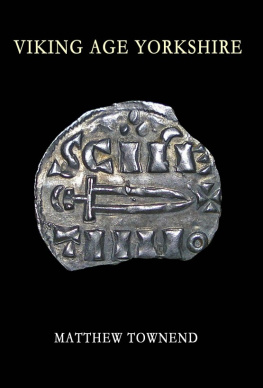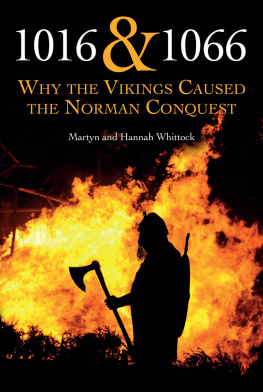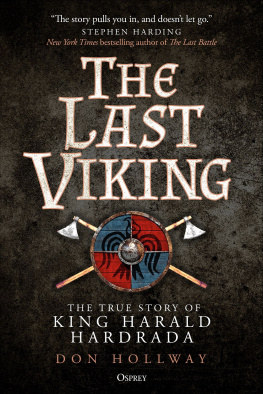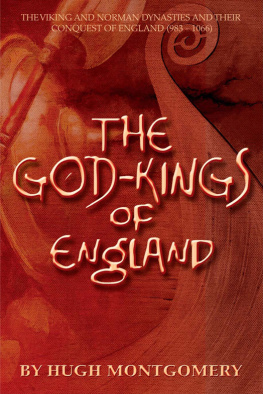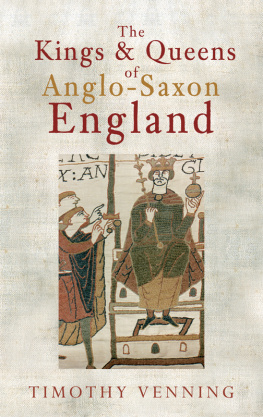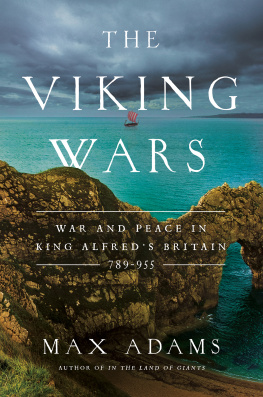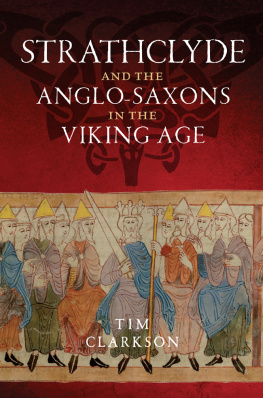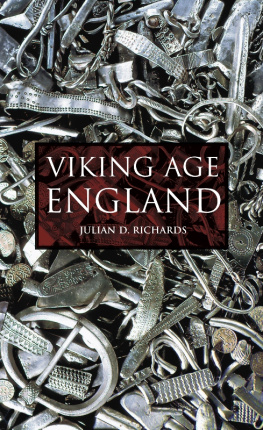VIKING AGEYORKSHIRE
MATTHEWTOWNEND
BLACKTHORNPRESS
BlackthornPress, Blackthorn House
Middleton Rd,Pickering YO18 8AL
UnitedKingdom
www.blackthornpress.com
All rightsreserved. No part of this publication may be reproduced, stored ina retrieval system or transmitted, in any form or by any means,electronic, mechanical, photocopying, recording, or otherwise,without the prior permission of the Blackthorn Press.
CONTENTS
Introduction: Approaching the History of Viking Age Yorkshire
The EarlyViking Kings of York
The LaterKings of York: from Rgnald to Eric Bloodaxe
Scandinavian Settlement
Contact andConversion
Town andCountry: York and its Hinterlands
Yorkshireunder the West Saxon Kings
Epilogue:1066 and Beyond
AUTHOR PROFILE
Matthew Townendis Reader in the Department of English and Related Literature, andCentre for Medieval Studies, University of York.
ILLUSTRATIONNOTE
To enable thisversion of the book to be published in certain formats, theillustrations and diagrams have been removed. The illustrations areavailable in the Kindle format on Amazon and in the printedbook.
ACKNOWLEDGEMENTS
I am verygrateful to the many friends and colleagues who have given me helpand guidance in various ways. My especial thanks are due to SteveAshby and Tom Pickles, who generously read through the book indraft form, and suggested many improvements. I am also grateful toAlan Avery of the Blackthorn Press, for inviting me to write thisbook in the first place, and for his patience and support while Ihave been writing it. Finally, and above all, I wish to thank myfamily: my wife, Natasha Glaisyer, and our two sons, Robin and Kit,to whom this book is dedicated with gratitude and love.
CONVENTIONS AND ABBREVIATIONS
A number ofconventions employed in this book should be noted:
(1) Placeswithin the county of Yorkshire are normally identified by theirpre-1974 riding, as follows:
ER = EastRiding
NR = NorthRiding
WR = WestRiding
(2) Personalnames are cited in a variety of forms. There is no simple,consistent means of modernizing or regularizing Anglo-Saxon andNorse personal names, and on the whole I have used the forms whichare most frequent in modern scholarship; occasionally, in thetreatment of Norse names in particular, I have decided simply touse an un-modernized Old Norse form.
(3) In quotingfrom primary sources, I have normally used published translationswhere they are available, though occasionally I have preferred touse my own, or to adapt published versions slightly. I have,however, silently changed the forms of personal names (and,occasionally, place-names) used in the translations I quote from,in order to bring them in line with my usage elsewhere in thebook.
(4) Thereferencing system used is normally author-date (with fullpublication details provided in the Bibliography), but for a smallnumber of works that are cited with high frequency I have employedabbreviations as follows:
ASC =Whitelock 1961
EHD =Whitelock 1955
PNERY =Smith 1937
PNNRY =Smith 1928
PNWRY =Smith 1961-63
INTRODUCTION
APPROACHING THEHISTORY
OF VIKING AGEYORKSHIRE
The MiddletonCross
There is afamous piece of stone sculpture from Viking Age Yorkshire. At thetime of writing, the Middleton Cross, as it is commonly known, isdisplayed in the north aisle of St Andrews Church, Middleton, nearPickering [NR]. The main panel of this tenth-century sculptureshows a warrior, viewed front on and surrounded by his weapons. Tothe viewers left (the warriors right) is a tall spear, while tothe viewers right (the warriors left) can be seen, from top tobottom, a round shield, a sword, and a large axe a distinctiveScandinavian weapon on which his hand seems to rest. Across hiswaist, attached to his belt, is a short sword or knife, and on hishead there sits a plain conical helmet no theatrical (andapocryphal) Viking horns are to be found here, and indeed theheadwear might possibly be not even a helmet but rather a hat orcap. The warriors legs seem a little bent, and his feet point tothe left (the viewers right). This main panel forms part of thecross-shaft, and above the panel the sculpture is topped by aringed cross-head decorated with interlace a distinctive formfrom the north of England in the Viking Age.
This compellingpiece of sculpture, which apparently brings us eye-to-eye with aViking Age warrior, has been much reproduced in books and articleson the Vikings. But it fully came to light only in 1948, when itwas removed from the church tower at Middleton in the course ofrepairs. In 1956 Alan Binns argued that the sculpture depicts aViking warrior lying in his grave, surrounded by his armoury ofweapons, and this interpretation was generally accepted; thepresence of such a quantity of grave-goods, moreover, surelyindicated that this warrior was pagan. But in 1973 James Lang drewattention to the two beads or pellets above the figures shoulders,and also to the strips between his legs. This is not a deadwarrior in his grave, Lang suggested, but rather a living oneseated on his ceremonial throne or gift-stool, with the pelletsabove marking the top of the seats pillars, and the strips belowmarking its legs. Langs interpretation continued to accentuate amartial identity for the figure depicted, but matched it with anequal emphasis on his jurisdiction and largesse. So in this view weare coming face-to-face not so much with a ferocious pagan warrior,as with a tenth-century member of the local landed gentry.
Moreover, ifthe weapons are no longer to be seen as grave-goods, then thegrounds for seeing this as a pagan figure disappear. The panel is,after all, surmounted by a cross-head, and the monument as a whole presumably a funerary monument for the figure represented on it was found built into Middleton church, and no doubt derived fromeither the church itself or its churchyard. Victoria Thompson hastherefore supplemented Langs interpretation by suggesting that thesurrounding weapons can be viewed not only as literal, physicalones, but perhaps also as spiritual ones in other words, as theweapons of faith of which St Paul writes in Ephesians Chapter6.4 Such a view takes us even further from the supposedpagan warrior in his grave, and offers instead an interpretationwhich foregrounds Christian piety and scriptural iconography.
The warriorpanel on the Middleton Cross raises even more questions when viewedin the context of other sculptural scenes from the same site indeed, from the very same stone, for the reverse of thecross-shaft shows a serpent or dragon-like creature crammed intothe panel. A front leg can be seen across the top of the panel,with a paw or claw top left; a rear leg can be seen a quarter ofthe way up on the right-hand side. Two prominent eyes punctuate theanimals head, below which are a pair of odd-looking jaws (indeed,viewed upside down, the jaws are unavoidably reminiscent of arabbits ears). Twining across and even through the animal arevarious bands of interlace, forming something of a compressed meshat the bottom of the panel. The serpent is unquestionablyScandinavian in its aesthetic, but although it has affinities withthe so-called Jellinge style, art historians have found itdifficult to fit it into the canonical art movements of the period.The reason for this is its poor quality in terms of design andworkmanship almost inconceivably incompetent, according to onestandard work on Viking art which raises questions about theaccess enjoyed (or not enjoyed) in Middleton to top-qualitysculptors.5 Furthermore, it has been suggested that theMiddleton serpent represents an inadequate attempt at copying artstyles that are seen more successfully on sculptures found in York which makes the Middleton example look like a somewhat clumsyrural attempt to emulate urban sophistication.6 So ourMiddleton warrior-sculpture, celebrated though it is, may be theproduct of a cultural periphery rather than centre, even though itsfrequent reproduction nowadays may give the impression that it isan object that comes from the heart of Viking England. And whatdoes the serpent signify? Is it some sort of Christian image,perhaps the dragon-devil of Revelation 20, seeking unsuccessfullyto attack the soul of the departed?7 Or is it simply aform of Scandinavian space-filler, chosen for decorative ratherthan symbolic reasons?
Next page
